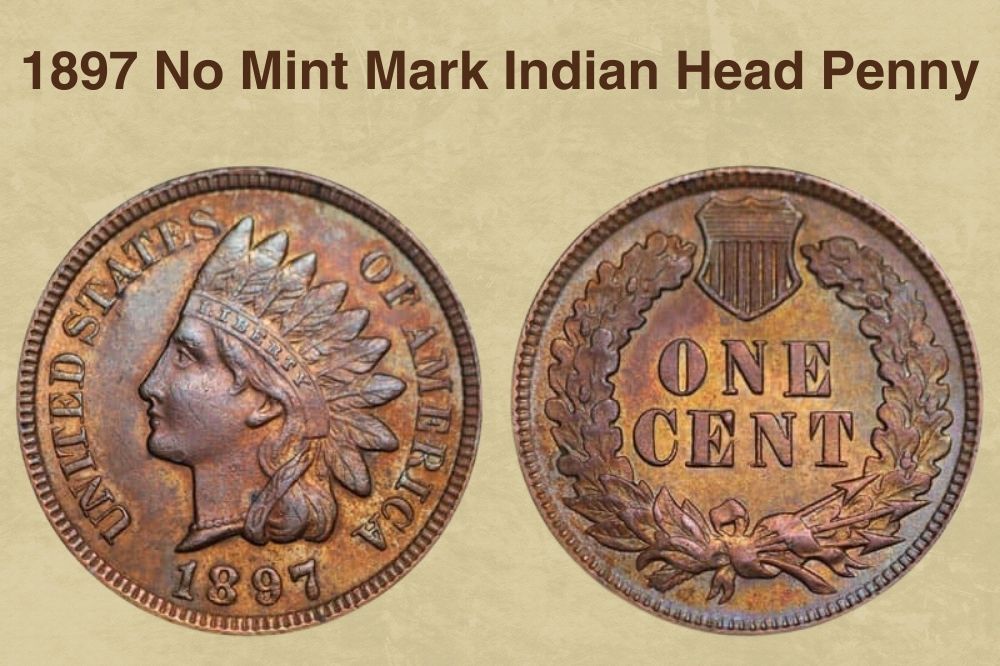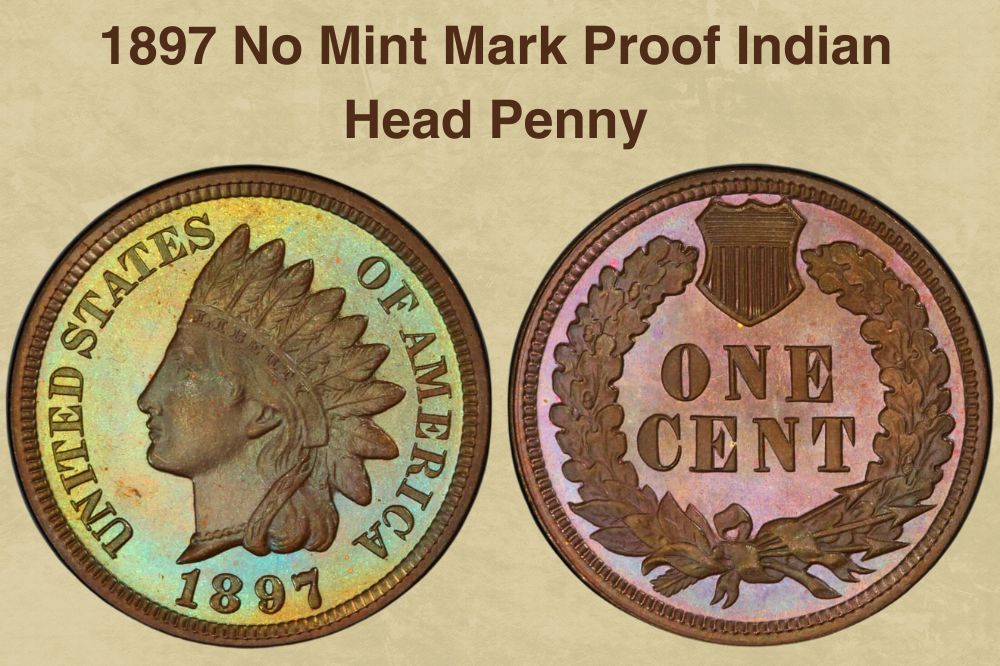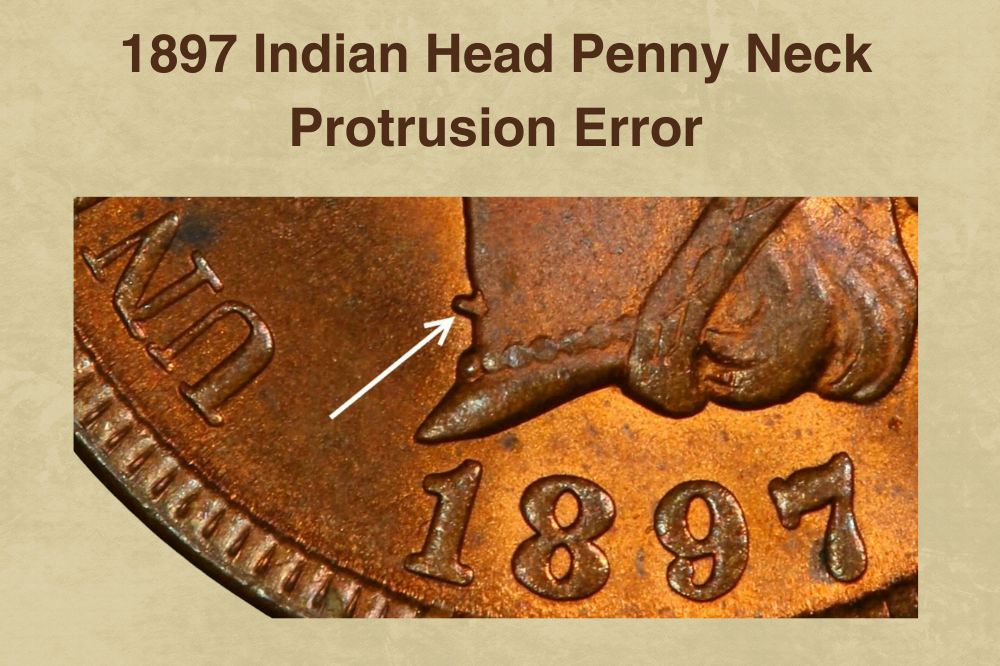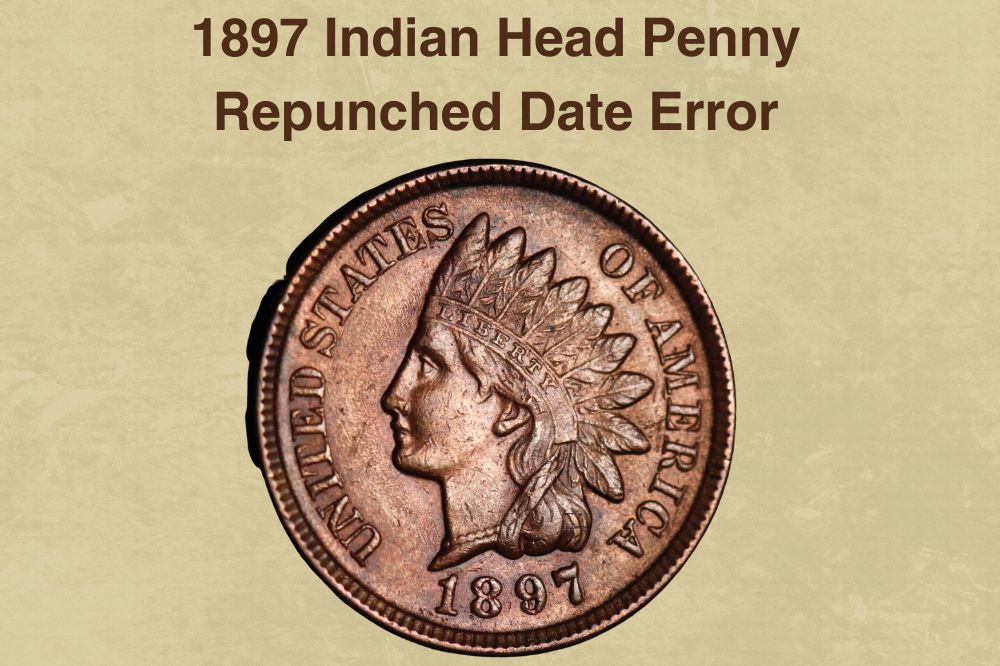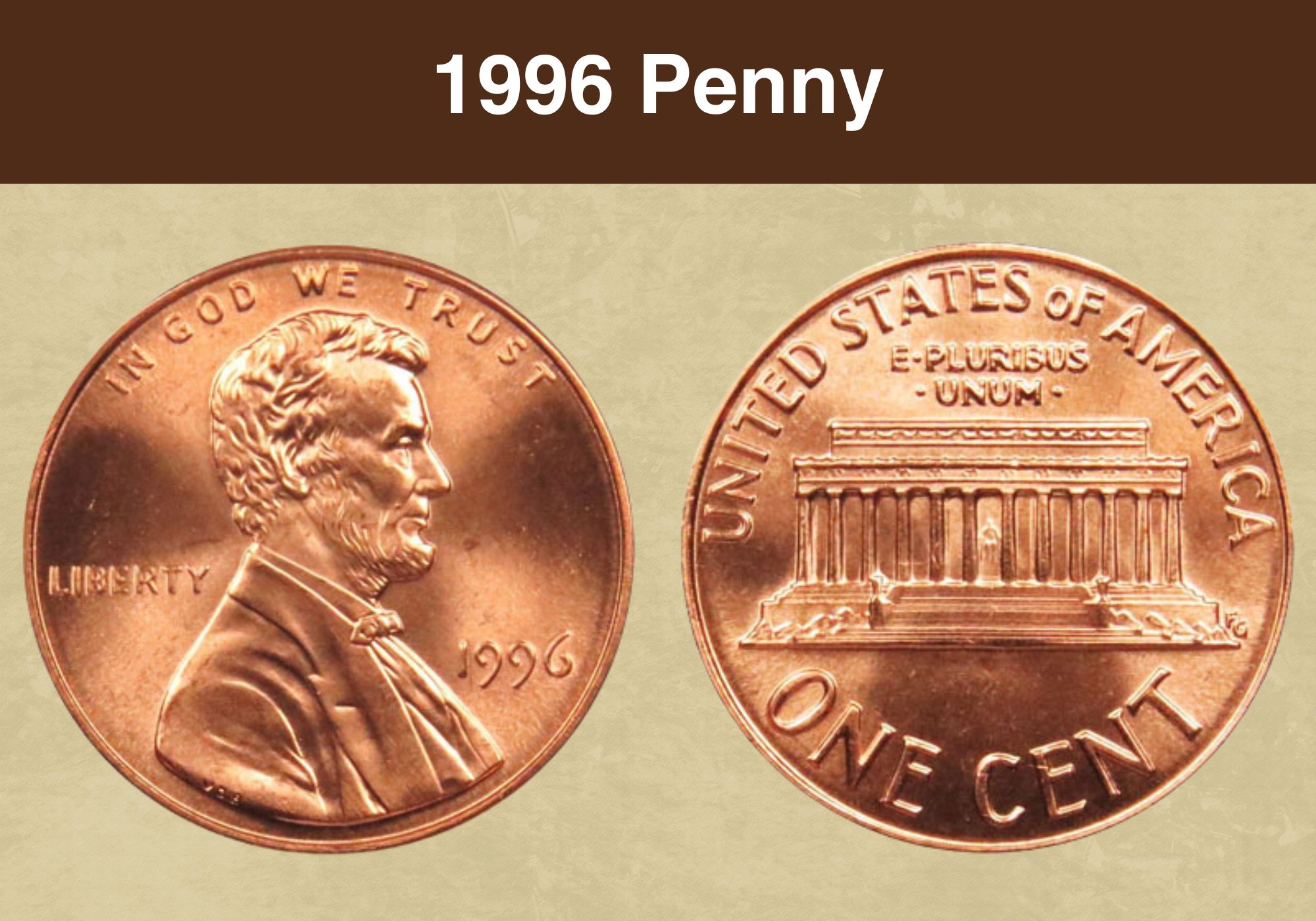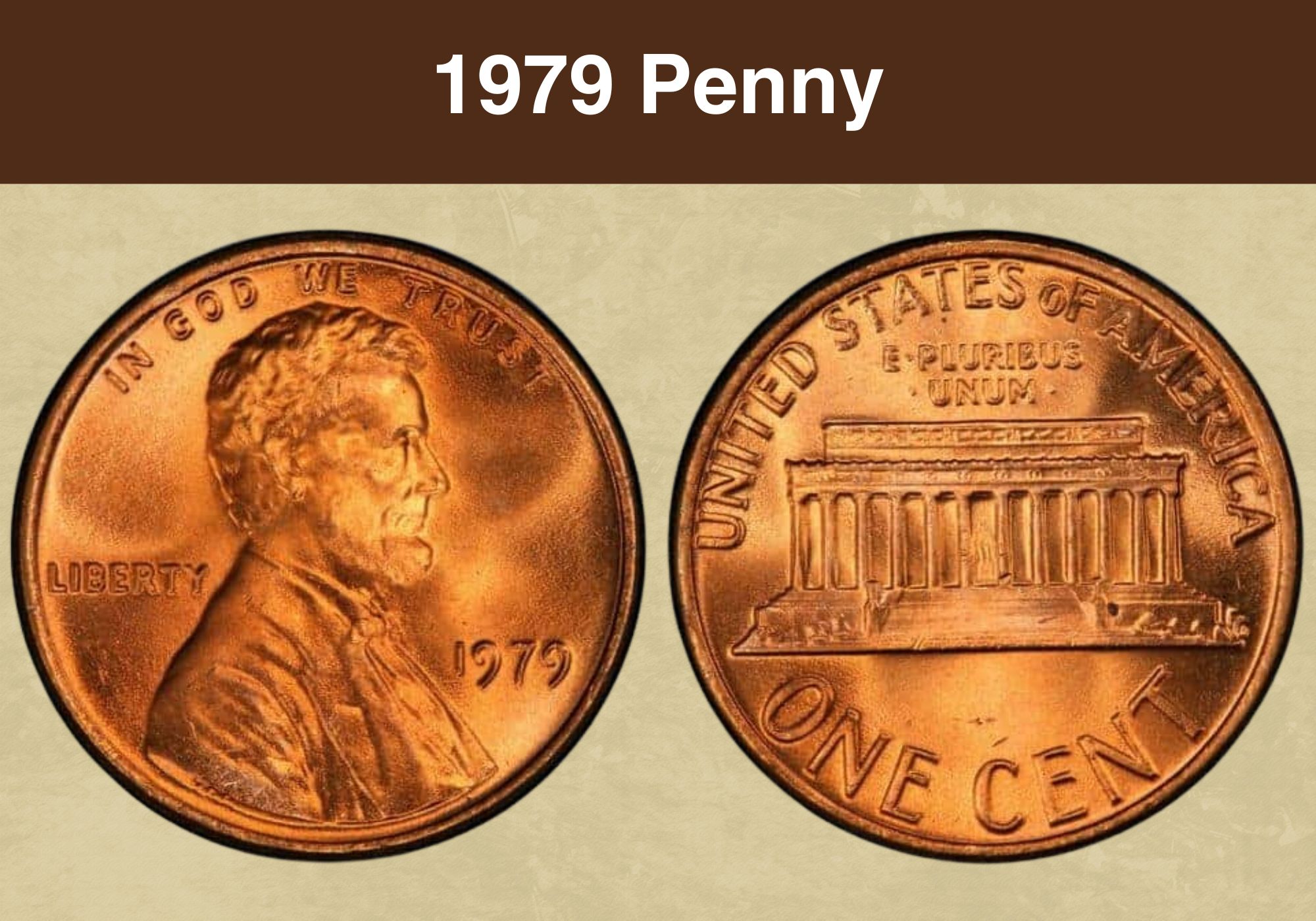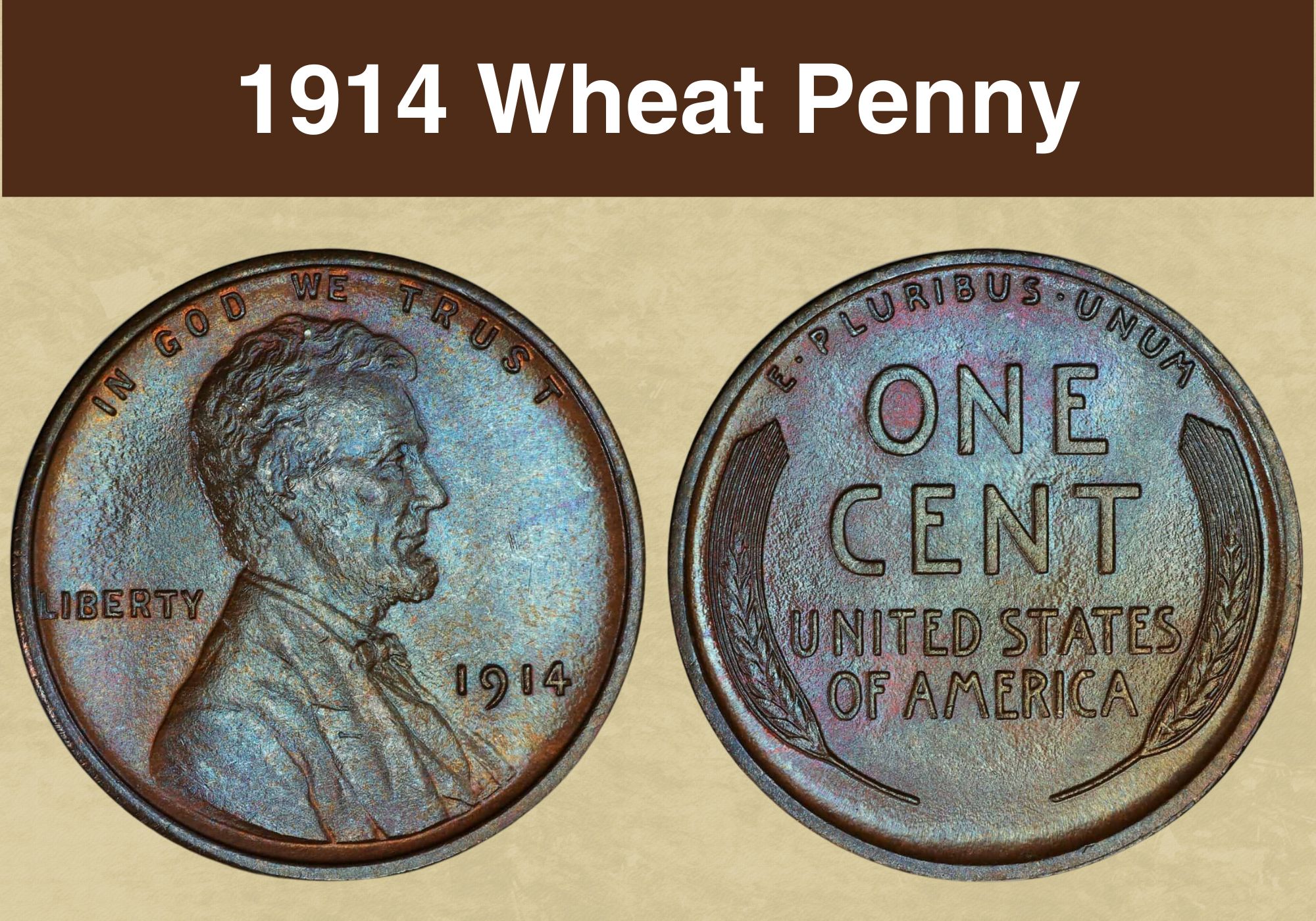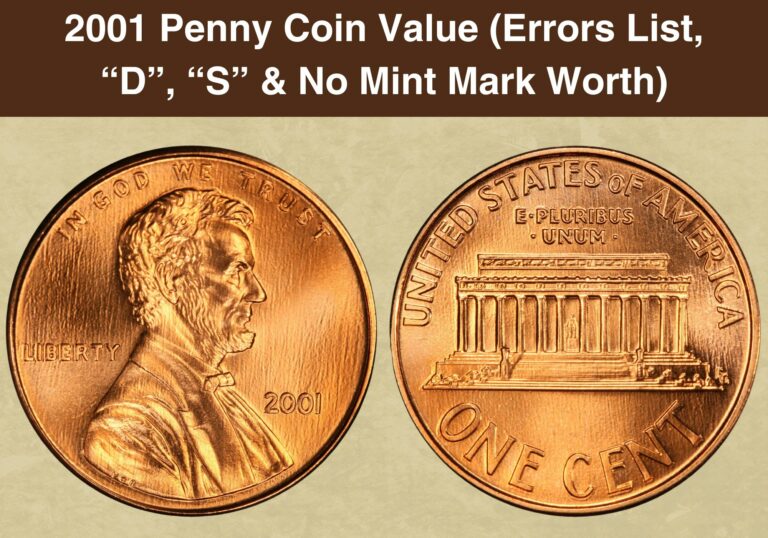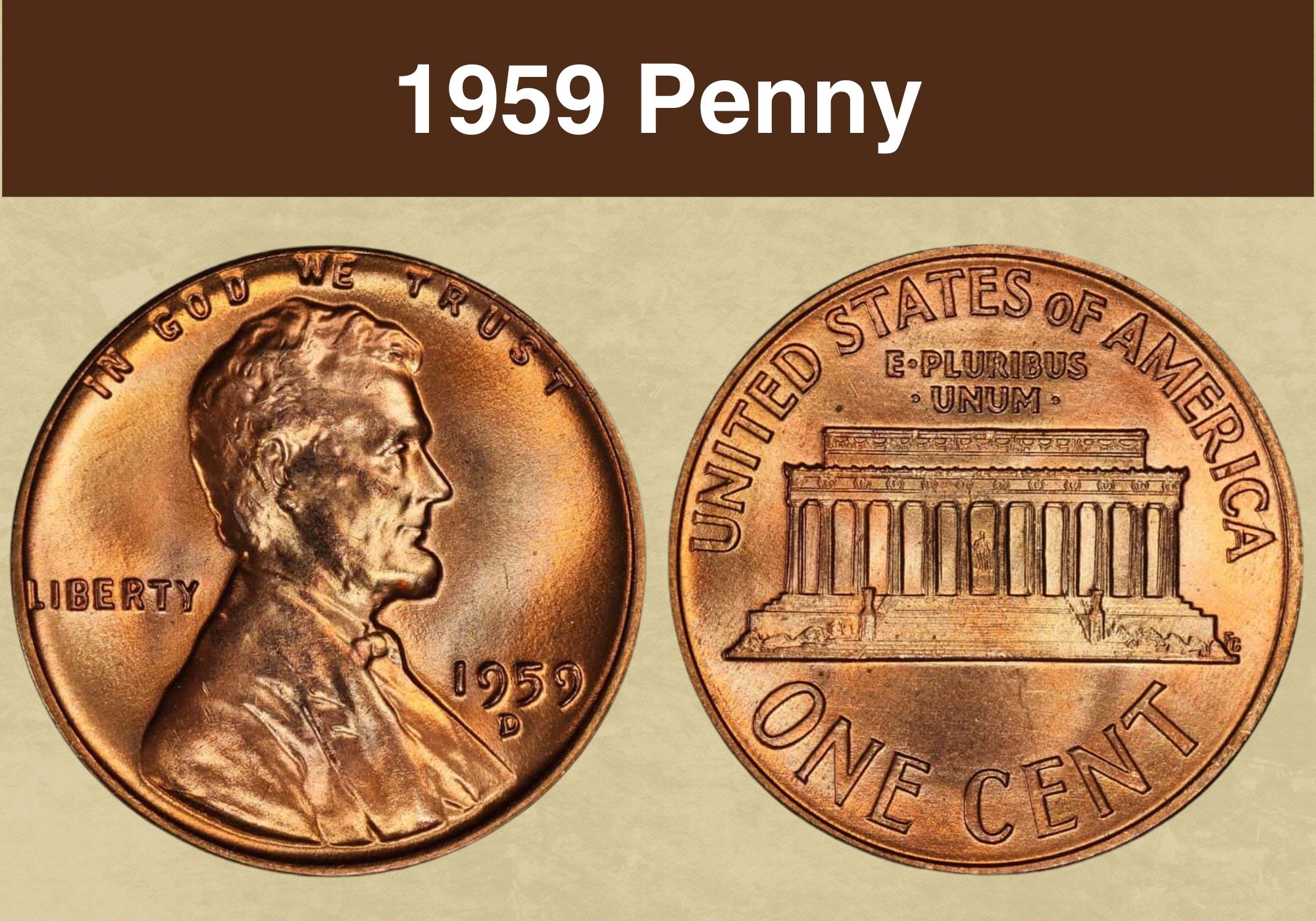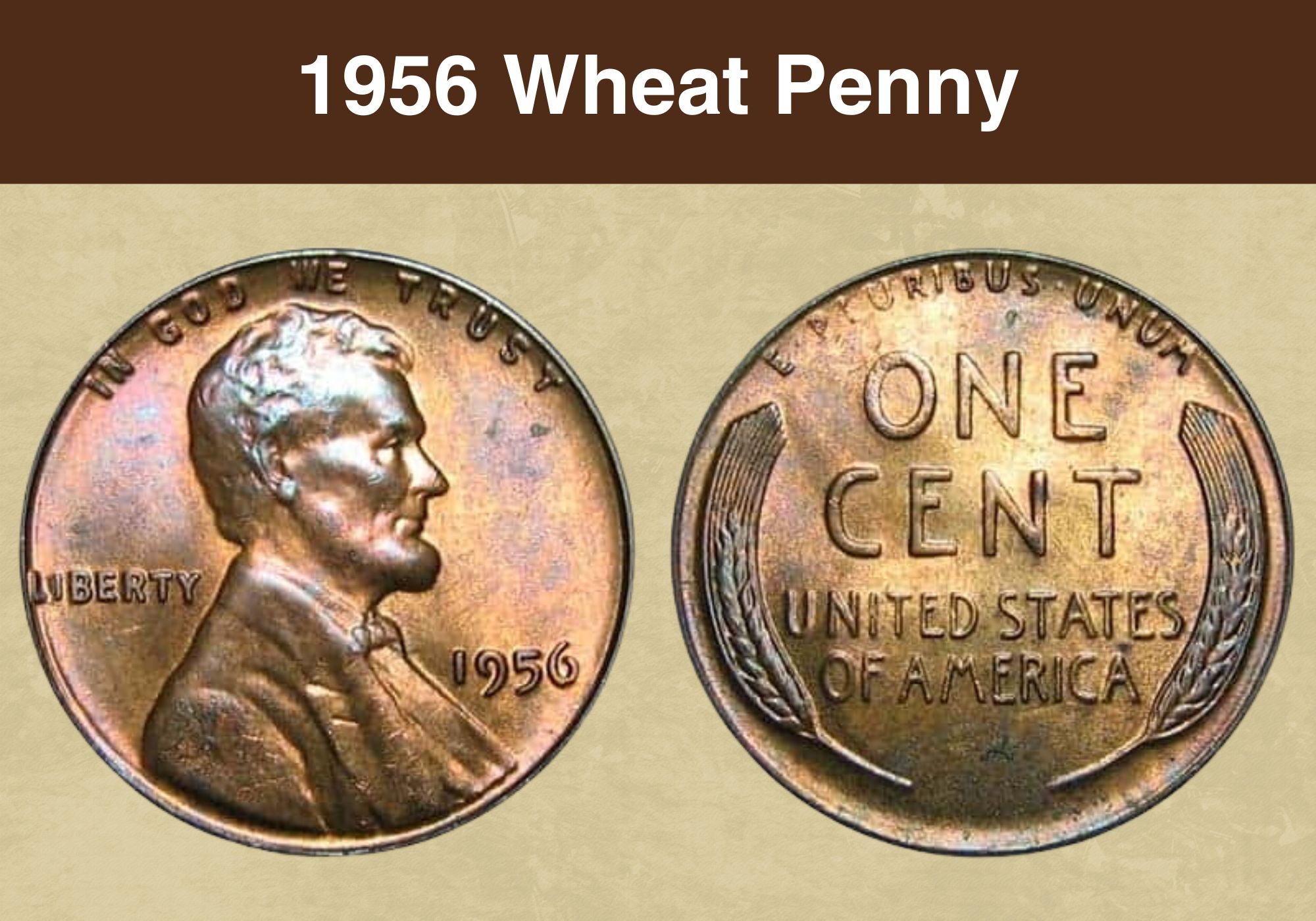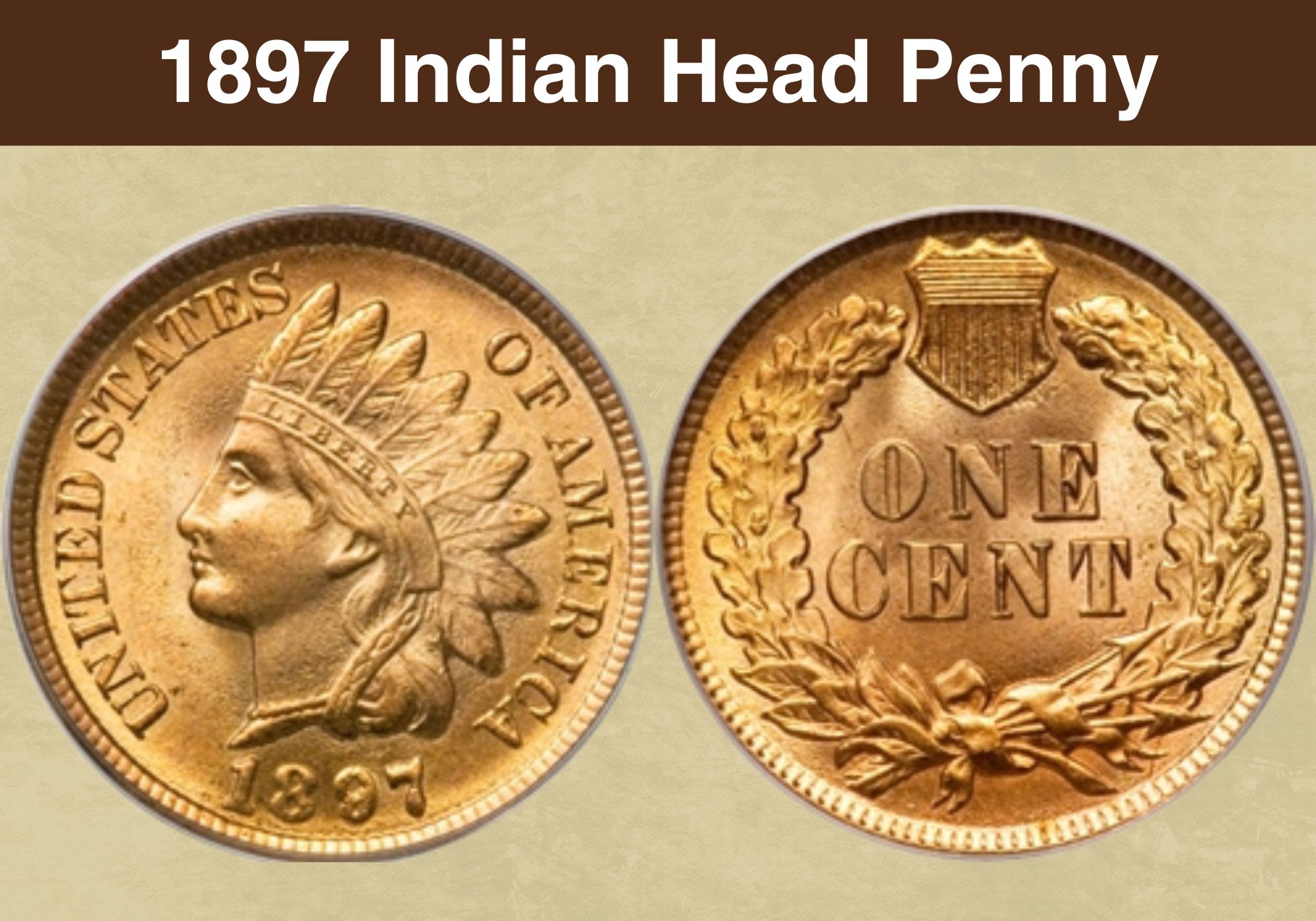
Coin Value Contents Table
- 1897 Indian Head Penny Value Chart
- 1897 Indian Head Penny Grading
- 1897 Indian Head Penny Value By Mink Mark
- 1897 No Mint Mark Indian Head Penny Value
- 1897 No Mint Mark Proof Indian Head Penny Value
- Rare 1897 Indian Head Penny Error List
- Where to Sell Your 1897 Indian Head Penny ?
- 1897 Indian Head Penny – FAQs
The 1897 Indian Head Penny is part of a series of coins that ran from 1959 to 1909. These coins are much-loved by collectors due to their age, history, and affordability. But is your 1897 Indian Head Penny a valuable one?
There are multiple factors that go into the 1897 Indian Head Penny value, but we’ll break that information down for you right here. We’ll also look at how these coins are graded, notable errors, and also answer some FAQs. Read on to find out more!
1897 Indian Head Penny Value Chart
| Coin Grade | MS/PR60 | MS/PR63 | MS65/PR67 | MS67/PR68 |
| 1897 No Mint Mark Indian Head Penny | $40 | $70 | $200 | $20,000 |
| 1897 No Mint Mark Proof Indian Head Penny | $150 | $275 | $550 | $3,000 |
1897 Indian Head Penny Grading
If you’re new to coin collecting, then you may have been a little confused by the terms we’ve been using such as ‘MS67’.
Well, the number is on a scale from 1 to 70, with 1 graded coin being in terrible condition and 70 rated coins in perfect condition.
The ‘MS’ stands for mint state and is given to coins that were meant to be circulated at a grade of 60 or above. The other letters used are ‘PR,’ which stands for Proof. These coins were made for collectors and never intended for circulation.
| # | Grade |
|---|---|
| 1 | Basal State-1 |
| 2 | Fair |
| 3 | Very Fair |
| 4, 5, 6 | Good |
| 7, 8, 10 | Very Good |
| 12, 15 | Fine |
| 20, 30 | Very Fine |
| 40 | Extremely Fine |
| 50 | About Uncirculated |
| 60 | Mint State |
| 65 | Mint State |
| 70 | Mint State |
Please check our grading guides to know your coin scale, It’s the necessary step to know the exact value of your coin.
Check out now: How to Grade Indian Head Penny?
1897 Indian Head Penny Value By Mink Mark
There are currently six mints in the USA, but it never used to be that way. Philadelphia was the first US mint ever built and for a long time, was the only one used for coinage. This was the case when it came to making the 1897 one-cent coin.
Due to this, there are only two varieties of the 1897 Indian Head Penny. They are the general coin meant for circulation and the proof coin. Combined, there were over 50 million pennies minted in 1897, with almost them being the regular 1897 No Mint Mark Indian Head Penny.
These coins were designed by James B Longacre and had a composition of 95% copper and a 5% combination of tin and zinc. Let’s take a look at the two varieties in a little more detail.
1897 No Mint Mark Indian Head Penny Value
With most coins, all you need to worry about when it comes to their value is their scarcity and grading, with the two of them usually being connected. This is because the higher the grade, the rarer coins will be.
While they are two common factors when it comes to the value of a coin, there is a third factor with Indian Head Pennies, which is their color. These coins will either be designated as brown, red/brown, or red, which we’ll discuss in more detail shortly.
The total mintage for 1897 No Mint Mark Indian Head Penny was 50,464,392. While that figure is dwarfed by the number of coins produced in recent times (some coin years have over a billion pieces struck), it is still a very high number.
That means, even though these coins are well over 100 years old, they are still easily available today in worn condition. If you have an 1897 Indian Head Penny that is in poor condition with dents and scratches, then it will struggle to sell for much more than a few dollars.
It’s these low values that make the Indian Head Penny such an appealing coin to new collectors. You are able to get a piece of American history, but you can complete the full set of Indian Head Pennies without breaking the bank.
You may now be wondering at what condition does the value of these coins start to get interesting? Well, a 20-graded coin is called ‘Very Fine,’ and this is where you have moderate wear on the raised surfaces of the coin.
At this grading level, the 1897 Indian Head Penny will be worth around $5. At a 50 grade, this will only jump up to about $25. At this grade, there can only be minor traces of wear on the coin’s raised surfaces.
To the untrained eye, a 50 coin may look near perfect, but there are 20 grades above this. Serious money only comes from grades of around MS65. At this level, the coin can have only very minor defects that are barely noticeable to the naked eye.
With coins at this grade, you can expect to get around $5,000, depending on their color. At MS67, this can jump up to an incredible $20,000. The reason is that this is the highest known grade for these coins, and they are incredibly rare.
The record sale for an 1897 Indian Head Penny is $45,600, which was sold in 2019. This was a beautiful coin one that had a bright red luster and was rated at an MS67.
As we mentioned before, a huge factor that dictates the value of these coins is the color. Brown coins will have the lowest value of the three types. This is partly because they are the most common type but also because they don’t have as much visual appeal.
The brown/red coins are the midway point between the two colors and are more appealing to collectors than brown coins. For those wanting to have the most valuable Indian Head Pennies, they’ll need to be red.
Exactly how much more valuable they are is hard to say, but generally, red/brown coins are at least twice as valuable as brown coins. Then red coins are approximately twice as valuable as red/brown coins.
For example, you have an MS66 coin. This might be worth $400 as a brown coin, $750 with red/brown coloring, and $4,500 if it was red. It’s worth noting these are very rough approximations, but hopefully, they help you understand how valuable red coins are.
1897 No Mint Mark Proof Indian Head Penny Value
In modern times, proof coins are often made specifically for collectors and made available for sale after they are struck without ever entering circulation. Millions of proof coins are usually made in any given year.
Back in 1897, it was a little different. At this time, proof coins were made to check that the dies were striking the coins correctly, and also for archiving purposes. Due to this, not many of them were produced, with only 1,938 1897 Proof Indian Head Penny coins being made.
Proof coins are meant to be perfect examples and, as they were never intended for circulation, are expected to be in excellent condition. Because of this, proof coins are often only valuable in the very highest grades.
On these coins, the details are usually very clear. There is an easy way to tell if you have a well-preserved coin due to the design. On the headdress of the American Indian figure are the words ‘LIBERTY.’ If you can clearly see the lettering here, then the coin will have minimal wear with a clear strike.
MS67 coins are the highest grade that you can easily find. With such a low mintage, these coins will sell on average for $15,000. While that may seem high, the record is far higher as in 2021, an MS67 coin sold for an incredible $108,000.
MS68-proof coins do exist but they are rare, and not often sold. The last MS68 coin sold through official auctions was over 11 years ago, which makes it very difficult to judge their value, but we’d expect you could get at least $40,000 for one with good color.
Due to their scarcity, even proof coins at lower grades can be far above their face value. In mint condition, sales of $150 can be expected at the minimum. If you have a proof coin, then it’s always a good idea to get it officially graded.
Whether you have a regular 1897 No Mint Mark Indian Head Penny or a proof coin, it’s easy to see why these coins are beloved by collectors. If you’re not sure what exactly we mean when talking about the grading of these coins, we have a brief explainer for you.
Also read: 12 Most Valuable Lincoln Penny Worth Money
Rare 1897 Indian Head Penny Error List
We’ve talked a lot here about how coins in high grades can be highly valuable, but there is another way to get valuable coins, and that is if they have errors. Due to this, let’s take a look at the 1897 Indian Head Penny errors.
1. Neck Protrusion
The most famous error in the 1897 Indian Head Penny is the ‘1 in Neck’ mistake that can be seen on many coins, but usually those in the lower grading levels.
This happened due to the date being punched twice onto the coin. The first punch was near the middle of the coin. Then it seems as though the intention was to completely cover that date with the portrait on the second punch.
However, this didn’t always happen. On some coins, a small part of the ‘1’ from 1897 is sticking out from the neck of the portrait. For well-worn coins, they will be worth at least $30 but in higher grades, they can be valued at well over $3,000.
2. Double Strike
A double strike is a common problem that you see on many different coins from many different years. After being punched, the newly struck coin should be ejected in order for a new planchet (blank coin disk) to take its place.
But this doesn’t always happen as it should. There are times when the coin fails to eject properly and can get struck twice. When it does, the pattern will be reprinted on the coin, usually way off-center. The value of these coins usually depends on how big the error is, but they are easily worth $300 or more.
3. Repunched Date
There are times when the date will be punched twice onto the coin, but sometimes it won’t exactly be in the same spot. These errors are usually so minor that they won’t be spotted by someone not looking for them.
At its most significant, there will be an overlapping of the numbers, as if they have a shadow. However, with most of these errors, the numbers will just look thicker than usual.
Repunched dates are usually highly sought after and can often be worth at least $150. But it can get much higher than that. One highly rated repunched date coin sold for over $30,000.
Also read: 17 Most Valuable Indian Head Penny Worth Money
Where to Sell Your 1897 Indian Head Penny ?
Now that you know the value of your coins, do you know where to sell those coins online easily? Don’t worry, I’ve compiled a list of these sites, including their introduction, pros, and cons.
Check out now: Best Places To Sell Coins Online (Pros & Cons)
1897 Indian Head Penny – FAQs
1. Is an 1897 Indian Head penny worth anything?
Whether an Indian Head Penny will be worth anything will depend primarily on its condition. If you have a coin that is in the higher levels of mint state, then there is a good chance it will have a high value.
Even though these coins are well over 100 years old, they are still easily found in the lower grades. If you have a coin that is in well-worn condition, then it’s unlikely to be worth more than a couple of dollars.
2. What is the error on the 1897 Indian Head penny?
There are three significant errors found in the 1897 Indian Head Penny. They are the ‘1 in Neck’ misplaced date, a repunched date, and a double strike. We’ve provided more information on these various errors above.
If you find any of these errors, then you may be in possession of a valuable coin. Even coins in poor condition can be sold for around $50, but if you have an error coin that has been kept in mint condition, this can be worth thousands of dollars.
3. What is the rarest Indian Head penny?
In terms of an Indian Head Penny having a low mintage, then that would go to the 1909 S Indian Head Penny, where just 309,000 coins were produced. Due to this, these coins can be hard to find, especially in mint condition.
However, an Indian Head Penny from any year could be considered rare depending on its condition. As we’ve seen here, any coin in grades of MS67 or MS68 can be highly valuable due to its rarity, especially if they are red in color.
Also read: 13 Most Valuable Wheat Penny Worth Money

